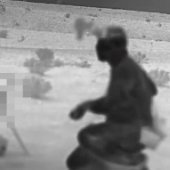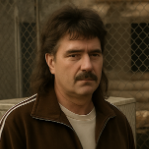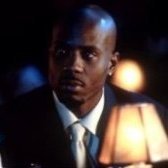All Activity
- Past hour
-
- 3 replies
-
- coming soon
- rollin40s
-
(and 4 more)
Tagged with:
-
COMING SOON. WE'RE CURRTENTLY RECRUITING NEW MEMBERS AND WORKING ON MODS. IF YOU WISH TO CONTRIBUTE, PLEASE HIT MY INBOX WITH A DM. ALL SERIOUS MEMBERS ONLY.
- 3 replies
-
- coming soon
- rollin40s
-
(and 4 more)
Tagged with:
-
RECRUITMENT. Allow us to introduce ourselves; on behalf of all of the ALL SIDE 40 CRIP leadership and high council we'd like to hold ourselves up to a pretty high standard of roleplay and we say that in the humblest way possible. Instead of instantly trying to roleplay with the faction, it is recommended that you join our Discord server for a more in-depth look behind the faction's infrastructure and how we operate as a whole. Keep in mind that before making your character, the community is the key. We're portraying a street-gang within a community, however, if you are looking for something higher to tie it all together, this is where our emphasis on our community development and interaction comes into play. Our ultimate goal is to portray a realistic street gang with a community like atmosphere within the Western Jefferson (Vermont Square) neighborhood. It is imperative that you check it frequently to stay up to date with the conversations and topics that are present revolving the faction within the Discord. If you're not serious about role-playing with us and don't have any quality role-play to contribute to the faction, then don't even bother joining because you will be weeded out and removed without a warning. The faction itself consists of a majority of American-time zoned members (GMT -4 to GMT -8), however, there are quite a few members in the European time zone (GMT 0), so people should keep in mind that you will probably catch people in-game no matter what time zone you are in. Every day is different, so our "peak" times cannot be specified. You will most likely catch more members online during the nighttime and sometimes during the afternoon due to school and work (between 2:00 PM and 12:00 PM).
- 3 replies
-
- coming soon
- rollin40s
-
(and 4 more)
Tagged with:
-
ALL SIDE FOETY CRIP. By: CINDY CHANG DEC. 18, 2019 | 3AM STAFF WRITER Garry “Twin” Dorton walked up to his childhood home, past the tree trunks that had shielded him from bullets many of times. THE STORY OF GARRY DORTON. It was about 7 on a summer evening, still light out. Inside, they had given up waiting on him and cut the cake. He said “happy birthday” to his grandmother, ducked into the bathroom and headed out again. As always, she implored him to go straight home and not hang out. This was his block of Van Ness, lined with the impossibly tall, wind-bent palm trees featured in movies about South Los Santos — the backdrop for his heyday as a leader of the Rollin’ 40s Crips, dealing crack, tooling around in a Mercedes-Benz, warring with the Bloods across 48th Street. The monikers “Big Twin” and “Twin 1" were his birthright for being six minutes first out of the womb. Everyone knew Garry and Jerry, the identical twins from Van Ness, with their reddish hair, heavyset builds, down-to-earth charm and matching “40s” tattooed on their forearms. The Dorton Twins In recent years, Dorton had turned from the dark side to good, using his street cred to mediate between rival gangs and mentor young people. At 48, with five children, he had settled into modest prosperity as a gang interventionist for the city with a side gig providing security for TV and film shoots, such as John Singleton’s “Snowfall.” But there is a hard truth to gang-banging. You can never leave it behind, no matter how cleanly you live. Something from your past, or a minor conflict from the present, can come back to bite you in a world where people settle their scores with gunfire. Dorton’s milestones growing up were these: First robbery at 12. First drug deal around the same time. Becoming a father at 15. He knew right from wrong but right was less glamorous. Circa. 1984 -- 42nd St & 7th Ave. Crack cocaine hit the streets of Los Santos in the early 1980s. The money was easy and the danger close to home. Rivals threw Molotov cocktails into his grandmother’s house and shot up her front door. “Like lacing my shoes and putting a belt on, I had to put a gun on. That was the way of life,” Dorton said in a 2017 interview with The Times. But bullets never touched him — not when he took cover behind those palm trees, not when he was cruising on Crenshaw and some Bloods shot at his car, hitting his twin in the arm. In the late 1990s, as Dorton approached his 30th birthday, the police seemed determined to put him away. His criminal record was sparse — reckless driving, cocaine possession. But they were threatening to slap him with a gang enhancement, which could have meant a long sentence. It was time to walk away, he decided — not from the neighborhood, not from his friends, but from the road that ended in prison or death. “They were locking up a lot of people at the time, so we just had to change up,” Dorton said in the 2017 interview. “I got tired of fighting those cases and all that. I said, ‘Well, you know, I’ve got to change, got to go to work, got to go back to school, you know, start doing things like trying to keep it productive.’” A NEW HORIZON. It was awhile before he stopped tucking a gun into his waistband. But his lifestyle gradually shifted. For a time, he and his brother operated a convenience store down the block from their grandmother’s house, using the business acumen they had honed dealing drugs to sell chips and sodas. Dorton got his GED and took classes at SAN State L.S. In his spare time, he offered guidance to young people and became a familiar presence at community events. Four years ago, he scored a full-time gig as a foot soldier in the mayor’s Gang Reduction and Youth Development Program. When Dorton’s phone buzzed in the middle of the night, it was usually a notification from the city that someone had been shot. He would throw on some clothes and rush to the scene to comfort friends and relatives, tamp down rumors about who did it, talk people out of retaliating. Only high-status “Original Gangsters” were qualified for the work. These were men who had lived the violence of the 1980s and 1990s, when annual homicides in the city topped 1,000. These were men who had seen friend after friend die or go to prison for life and wanted to steer young people away from similar fates. On these streets, seemingly minor conflicts — an unpaid debt, a contested parking space — could mushroom into violence. Dorton convinced people that it was strong, not weak, to let a slight go. And there were the kids who still had a chance to avoid the mistakes he had made, who occupied his afternoons and weekends with fishing trips, pep talks, heart-to-hearts with their parents. The mayor and the police chief often touted gang intervention as a major reason why homicides and shootings were down in South L.S. The work was all-consuming, and it could be dangerous. Peacemakers are generally considered off-limits in gang warfare. But it is inherently risky to put yourself in the middle of angry, armed factions, to work with both police and gang members, to navigate complex gang politics where one misstep could be fatal. But Dorton stayed in the mix. Only by turning young lives around could he atone for his lost years. In the summer of 2018, the Rollin’ 40s were contenders for the Crips softball championship once again. TENSION. On July 1 at Vermont Square Park in Jefferson, they clobbered the Rollin’ 90s, 48 to 5. As the slate of games wrapped up, spectators packed up their picnic gear and headed home. The league had been a passion for Dorton since he brought in the 40s as one of the founding teams in 2016. It was an ambitious peacemaking effort, using sports to cement the tentative goodwill among Crip gangs, which more or less got along but were always at risk of flareups that could erupt into full-blown wars. Many of the players were middle-aged and no longer actively gang-banging. Like Dorton, they still identified strongly with their gang but wanted that affinity to represent something positive. They wanted to set an example for the young people who came to watch the ballgames. Plus, it was just plain fun to suit up with the homies and represent the neighborhood, trying to outplay and out trash-talk one another. “Hopefully, one day when I get old with a cane and sit in the bleachers, they’re playing, you know,” Dorton said of the young spectators. Dorton had stepped back from the league to answer the call of work and family on weekends. But he still attended the games when he could. He was there that day at Vermont Square Park when Xavier “Chico” Guerrero, a Rollin’ 60s OG, showed up. The 60s were at war with the 40s, so they were not allowed to join the league or even attend the games as spectators. Some 40s asked Guerrero to leave. The talk grew heated, and he retreated. It is unclear what role Dorton played in the altercation. On the phone with his fiancée later that day, he mentioned an incident at the game. “I’ll tell you when I get home,” he said. After stopping to offer birthday greetings to his grandmother, Dorton drove up the block to his longtime friend Tamajon Jackson’s house, where members of the Rollin’ 40s often congregated. Dorton’s grandmother, Eula Montgomery, had long urged him to leave the neighborhood. She knew trouble could still find him. But he lived around the corner and stopped by to see her almost every day. He was a man who planted his roots deep and tended them carefully, who loved barbecuing for a large crowd and arguing vociferously with his brother over trivial matters like the songs on a Mary J. Blige album. In his youth, he had channeled that loyalty into a culture where men took up arms for one another and a slight against one was a slight against all. One person may have pulled the trigger, but everyone from that gang was to blame. One person may have been disrespected, but his allies all felt the same thirst for revenge. “Anytime you lose a loved one, you blame everybody, you know — whoever you don’t get along with,” Dorton said in 2017. That ethos still burned strong in the next generation of gang members, from the young men Dorton tried to set straight to the thousands of others he had never met. A LIFE CUT SHORT. Dorton was standing by his truck in Jackson’s driveway at 7:30 p.m., chatting with friends, when a black Mazda sedan stopped in the middle of the street. Two young men got out, both armed with handguns, and began shooting. A bullet hit Dorton in the back of his left shoulder, piercing his heart and lungs and coming to rest in his liver. A man standing near Dorton was critically injured. By the time paramedics arrived, Dorton had no pulse. They performed CPR on him throughout the 12-minute ambulance ride. At 8 p.m., minutes after he arrived at the hospital, a doctor pronounced him dead. Dorton’s funeral drew an unlikely crowd, but one that reflected his work as a peacemaker — gang members from all over the city, including mortal enemies of the Rollin’ 40s, like Bloods and Hoovers, as well as a representative from Mayor Eric Garcetti’s office. Kevin “Twin” Orange, a gang interventionist from the Hoovers who worked closely with Dorton and whose own identical twin had died in gun violence, addressed Jerry “Twin 2" Dorton. “To lose a twin is like losing another half of your soul,” he said. Within weeks of Dorton’s death, police arrested a member of the Rollin’ 60s. Brandon Dixon’s GPS monitor, affixed to his ankle because of a previous crime, placed him at the shooting. Surveillance video from a nearby business showed that he was behind the wheel of the black Mazda. Dixon, 22, was charged with murder, attempted murder and other related crimes. The alleged gunmen in the car with him — Dejone Wright, 20, and a juvenile whom The Times is not naming — also were arrested and charged. Circa. 2012 -- 43rd St & S Kansas Ave. (Darcside & Parcside 40s.) BLACK HEARTED. As the Rollin’ 40s mourned Dorton’s death, retaliation seemed a real possibility. Dorton’s friends were outraged that he was targeted, when he should have had immunity as a noncombatant. “It’s not like he’s doing anything to harm anybody there,” said Berniel “Blue” Garrett. “If he’s in an opposing community, he’s there to save lives.... Why go after our peacemaker?” They quit the softball league. Their hearts were too heavy, and they worried that more violence could break out. ‘For him to die now, when growing up, he dodged all of that — it’s senseless.’ JERRY “TWIN 2" DORTON, ON HIS LATE BROTHER Dorton would not have wanted any blood spilled on his behalf, the 40s knew. For the most part, they did not channel their grief into revenge. But with Dorton’s death, the enmity between the 40s and the 60s grew deeper. It took the killing of another gang member turned do-gooder, the rap star and Rollin’ 60 Nipsey Hussle, in March, for the two sides to broker a fragile cease-fire as part of a wave of gang peacemaking that swept the city. Forgiveness was not necessary, only an understanding that the killing would stop. It was what Hussle and Dorton would have wanted. THE SUSPECTS. Dixon, the driver of the black Mazda, told his version of events to detectives. Guerrero, the Rollin’ 60s OG, had told Dixon and his friends about the dispute at the softball game. Dixon admitted to cruising past the house on Van Ness, where he recognized Dorton standing in the driveway. But Dixon insisted they went there to buy codeine from a Rollin’ 40, not to avenge their big homie. As they pulled up, a tall man with glasses approached the car and tried to shoot them, according to Dixon’s account. But the gun jammed. Dixon said he didn’t know his two companions were armed until they got out and began spraying bullets, while Dixon stayed in the car. Questioning a witness at a hearing in May, a prosecutor elicited a possible motive for the gunfire: a young gang member might want to impress his elders by acting on their behalf. The witness, an LSPD gang expert, dismissed the notion that a Rollin’ 60 would go to a Rollin’ 40s hangout to purchase codeine. TRIAL. Jerry Dorton sat in the small downtown courtroom, yards away from Dixon and Wright, wearing a T-shirt with a photo of his brother and him as babies in identical white tops and red shorts. “Two of a kind, 1970 — 2018,” the shirt said. Dixon’s attorney, Ludlow Creary II, argued that the young men acted in self-defense after the tall man pulled the gun on them. But the judge ruled there was enough evidence to send them to trial. Guerrero could not be reached for comment. Attorneys for Dixon and Wright declined to comment. A date for the trial has not yet been set. The third defendant’s case is being handled separately in juvenile court. These young black men were from the very demographic Dorton was trying to help, living the same life he had once led. The irony weighed heavily on his family and friends. “For him to die now, when growing up, he dodged all of that — it’s senseless,” his brother Jerry said. “Those kids — I used to be those kids.” At an earlier court hearing, Dixon and Wright stood handcuffed in a glassed-in holding booth. Wright spotted Jerry Dorton sitting in the audience. He shot a sidelong look at Dixon, and both stole glances at Dorton, who stared back hard. It was the face of the man they had allegedly sent to the grave, etched with a grief his brother had never known. More than 1,000 police officers and federal agents executed dozens of arrest and search warrants this morning in a coordinated operation in which members of a violent street gang were taken into custody for their alleged roles in the widespread distribution of narcotics. The results of today’s operation were announced by George S. Cardona, Acting United States Attorney in Los Santos; William Bratton, Chief of the Los Santos Police Department; Keith Bolcar, Acting Assistant Director in Charge of the FBI in Los Santos; and Carmen Trutanich, City Attorney in Los Santos. The announcement of the law enforcement operation called “40 Ounces to Freedom” was made on behalf of multiple agencies that participated in the investigation to assist the FBI/LSPD task force. Seventy-four members of the gang known as the “Rollin’ 40s Neighborhood Crips” were charged in 23 federal indictments and 45 state warrants for their alleged roles in a narcotics trafficking conspiracy that operated within a three-square-mile area of Los Santos. The federal indictments that were unsealed this morning charge 29 gang members with crimes that include conspiracy, possession with the intent to distribute cocaine base (“crack”) and methamphetamine, and firearms violations. Forty-five additional members of the gang are named in state charges filed in Los Santos Superior Court for their roles in the illegal drug distribution operation. Many of the defendants at the federal and state level were arrested this morning; however several defendants were already in custody on both related and unrelated charges. Several subjects of this operation are still being sought by law enforcement, including six federal defendants and 20 state defendants. The FBI/LSPD task force initiated an investigation in 2008 to address gang-related crime and persistent violence fueled by narcotics trafficking being reported in the city of Los Santos. Using statistics, including offenses reported to the police, and further analysis, the task force identified the Rollin’ 40s Neighborhood Crips territory as among the most violent in the city, and focused on the “shot callers” who control the criminal activity in the area. The Rollin' 40's Neighborhood Crips is a violent Crips gang that operates primarily in a three-square-mile area of South Los Santos, an area which falls under the jurisdiction of the LSPD's Southwest Division. The Rollin' 40s have established strong ties to other gangs under the "Neighborhood Crips" umbrella, as well as other Crips gangs in the local neighborhood. The Los Santos Police Department has identified this gang as one of the 10 most violent gangs in the city of Los Santos. The Rollin' 40s are organized into four loosely affiliated cliques that control their particular neighborhood area. Its members are known to be involved in a variety of crimes, including murder, assault, robberies, narcotics and firearms violations. Each clique is controlled by a shot caller who determines the overall strategy relative to the criminal activity within the clique. Prior to the charges announced today, this investigation resulted in 51 felony arrests and 35 misdemeanor arrests, separate from those individuals sought today, including members of the Rollin’ 40s gang and members of other gangs. Among those arrested were active parolees and felony probationers. In addition to substantial quantities of narcotics, task force members seized several handguns, rifles and a large amount of cash during this investigation. During today’s operation, narcotics were seized, as well as approximately 10 weapons. The Los Santos County City Attorney’s Office has brought parallel civil actions as part of this investigation, including five nuisance abatement lawsuits against six separate properties being used by gang members to conduct criminal activity, including drug transactions and illegal weapon storage. For each abatement, the City Attorney’s office will seek an injunction against the owner ordering various improvements, orders to stay away from gang members named as defendants in the lawsuits, civil penalties and additional fees. In addition to the five lawsuits, the City Attorney’s Office is notifying property owners that, by law, tenants conducting illegal drug activity must be evicted. A permanent injunction was filed against the gang in 2008. Based on federal sentencing laws, the mandatory minimum sentence each federal defendant faces are five years in prison. Eleven of the federal defendants face mandatory minimum sentences of 10 years in prison. If convicted of the charges, several federal defendants face between 20 years to life in prison. Federal defendants arrested today will make an initial appearance in U.S. District Court in Los Santos this afternoon. This case was investigated by agents with the Federal Bureau of Investigation and detectives with the Los Santos Police Department, in coordination with the Los Santos City Attorney’s Office. Multiple agencies participated in today’s operation, including the San Andreas Department of Corrections and Rehabilitation, the Department of Transportation, the San Andreas Highway Patrol, the Los Santos County Sheriff’s Department, U.S. Immigration and Customs Enforcement (ICE), the Los Santos City Fire Department - EMS Services, the Los Santos County Probation Department, and the Los Santos County Department of Child and Family Services. The federal defendants will be prosecuted by the United States Attorney’s Office in Los Santos. The District Attorney in Los Santos will prosecute defendants charged by the state. The FBI/LSPD Task Force is one of many FBI Safe Streets Task Forces throughout the United States, funded for the purpose of assisting local police in identifying and addressing violent crime in America. W/S Rollin 40s NHC/Spoetys/Gloves (4068) 🍀♿️ Also known as Spoety Gang, but they also go by Glove Gang due to their association with the Milwaukee Brewers logo. The 40’s are one of the biggest and most reputable Crip gangs in the city along with the Harlem 30’s and 60’s. They’re cliqued up with the Harlem 30's they had tension with the Rollin’ 60’s after some back-and forth murders that happened in 2013, though prior to this both NHC gangs were close allies. They beef with BPS, FTB, VNGB, IFG, 512GC, 52BGC, 83GC, HOB13, 83GC, and WS73GC, they push BK, HK, GK. RIVALS: The Rollin 40’s have waged war with a multitude of both Blood and Crip sets including the Rollin 20s Neighborhood Bloods, Black P. Stones, Inglewood Family Gang, Centinela Park Family Bloods, Fruit Town Brims, Van Ness Gangster Brims, Harvard Park Brims, Mad Swan Bloods / Family Swan Bloods, All Hoover sets including 43 Hoover Criminals Gang, 52 Hoover Gangster Crips, 59 Hoover Criminals Gang. 52 Broadway Gangster Crips, the Playboy Gangster Crips, School Yard Crips, the 51 Trouble Gangster Crips, the 40s Avalon Gangster Crips and the Gardena Shotgun Crips. They were once considered enemies of their former allies the Rollin 30's Harlem Crips to the south of their turf since approximately 1996. It was widely rumored that the Rollin 40’s was responsible for the shooting death of a Rollin 30’s member which sparked a fatal series of retaliatory shootings. Although a truce was declared between the two feuding gangs in 2006, some members of both gangs still harbor deep seeded hatred for one another; making their relationship extremely volatile at times. Additionally, the Rollin 40s used to have tension with the Rollin 60s Neighborhood Crips, but that is no longer the case. In addition to, the 40s has on and off hatred toward the Grape Street Crips (due to them being mutual with the Hoovers) and beef with the Hang Out Boyz. Circa. 2025 -- HOOD DAY. ALLIES: Other former allies include the Rollin 50s Neighborhood Crips. The Rollin 40s are currently cliqued up with both the 46 Neighborhood Crips and the 48 Neighborhood Crips (known as OWE/SIX/EIGHT), despite the fact that violent flare ups between the 3 gangs have occurred in the past. Other allies include the Raymond Avenue Crips, Rollin 30's Harlem Crips, Rollin 90s Neighborhood Crips, Rollin 100s Crips and all Blocc Crips. East Coast Crips & Main Street Crips. Darcside (R40s🍀♿) Darkside Crips. They claim 47st as their mainline. King to Vernon / North to South, Vermont to Figg / West to East. DOM gang in the northeast end of their turf. They beef with Hoovers hard, FTB, 512GC, Jungles, and WS73GC. Parcside (R40s🍀♿) Parkside Crips is located in Vermont Square Park. King to 48th / North to South. Normandie to Vermont / West to East. Parkside has the same beefs as Westernside. Westernside (R40s🍀♿) Westernside Crips stretch from Arlington to Normandie borderline with Parkside. They share the same beefs with one another. Avenues (R40s🍀♿) Avenue Crips main landmark is Leimert Park and Audobon Middle School turf wise. King to the North, 48th to the South, Crenshaw to the West, Arlington to the East. 48NHC is under 40 Aves, they run from Vernon to the North, 48th to the South, 7th Ave to the West, Arlington to the East. OSE clique is under Avenue 40s. They beef with Jungles, 20sNHB, Brims.
- 3 replies
-
- coming soon
- rollin40s
-
(and 4 more)
Tagged with:
-
-
Benny said this already... our Jimmy Hoffa. It was a real pleasure and a great run for this character . RIP Matthew Donnelly. Respect. The story goes on.
-
Could the issue be that my ucp account name is has two words separated by a space. When I log in the server I see only the first one.
-
No luck needed, take this far!
-
I'm also unable to change my default skin through the UCP.
-
This thread will follow the development of the characters involved in The Black Council faction, and some new faces too. The development takes place after the fall, when the crew scattered following heat, indictments, and betrayal, only the sharpest remained in motion.
-
It's been around 10 years since I've played on the server. I'm not sure if I'm doing something wrong or maybe I'm just skipping a step. I have gotten my old UCP account back, it had no characters which is what I was expecting. I went through the RP test and then I created a character. I'm trying to log in to the server through the samp client using my UCP name but I keep getting the following message: Your account isn't fully set up to be used in game. Please log out and relog in your UCP account at ls-rp.com and try again. I've relogged but I don't see any prompts on what I should do next. Any advice would be much appreciated.
-
VasVasic joined the community
-
RIP Donnelly. Benjamin Stompanto is back like he never left.
- Today
-
- 3,887 replies
-
- 2
-

-

-
- mc
- flintcounty
-
(and 1 more)
Tagged with:
-
- 3,887 replies
-
- 2
-

-

-
- mc
- flintcounty
-
(and 1 more)
Tagged with:
-
-
RIP Matt Donnelly aka Jimmy Hoffa of Los Santos!
-
RIP Matt Donnelly aka Jimmy Hoffa of Los Santos!



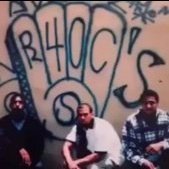
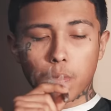


(1)(1).thumb.gif.c24af8f7818b5a5b3a96f27fdee19c5e.gif)





